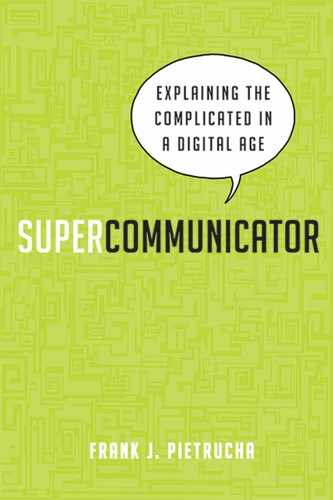Visual and Interactive |
|
As the son of a graphic designer, I appreciate the power of visualization. For about forty years, my dad, Frank A. Pietrucha, created annual reports, advertisements, newsletters, and logos for an assortment of organizations. I would like to believe I inherited his good eye for design, but know I lack his talent on the production side. I didn't pick up the ability to design from dad, but I learned an equally important skill from him. A graphic designer is only as good as the content professionals he works with.
I saw a stream of clients come through our house—where dad, a freelancer, held court. I observed them and got to know them. Inevitably, my father's best designs were created for clients who worked collaboratively with him—not the self-important people who dictated to him what they wanted, but the clients who engaged my father in constructive conversation. The savvy clients provided him with as much useful information as possible, offered lots of feedback, and ultimately wound up with the best finished product.
As a communicator, my job usually entails originating strategy and written content for clients. Like the parade of folks who worked with my dad, I now team up with graphics pros to bring my content to life. The lesson I learned growing up still holds true—the better you work with your designers, the more effective your communication efforts will be. Whether you describe yourself as a professional communicator or a professional who communicates—you can benefit by engaging with the people who work on building your websites, dreaming up your visualizations, and making your content come to life.
Not long ago, it was a crazy proposition for non-IT folks to master their own computer design needs, but more communicators are taking an active role in doing their own design and developing their own applications. If that's you—pay attention, because there's a lot more to generating quality graphics and applications than you may realize. If, however, you never plan to originate a design in Adobe Illustrator or never care to create any type of graphic image, you still need to pay attention. Supercommunicators are involved in all aspects of the communication process. We're the quarterbacks providing necessary input and driving the process. Our job is to make certain that whatever the creatives do, it brings meaning to the communication effort. You may not be doing the design or programming, but like the puppeteer Gepetto from Pinnochio, you're behind the scenes pulling the strings.
The invention of the personal computer opened the floodgates to a universe projected through a new lens. Our digital age world is filled with visuals and interactive tools. Suddenly it's easier for us to show rather than say in meetings. We can inform audiences by inviting them to participate in the learning process—not just sit back as idle observers. We're adding more graphs and photos to our reports and can even design fliers to advertise bake sales and find lost pets. Multimedia, including online tools and emerging learning experiences like hands-on museums and video games, make new content more visual and tactile. It's a good thing these tools have been invented—visuals and interactive learning help our comprehension. With all the complex subjects out there, we digital citizens need to understand that our brains appreciate relief from centuries of text.
“Vision is our most dominant sense,” writes John Medina, author of the bestseller Brain Rules. The developmental molecular biologist with a passion for the mind's ability to react and process information tells us that incorporating pictures into our communication efforts helps our audiences grasp content more effectively. “Pictures trump reading every time,” he claims, suggesting that people are more likely to remember information when offered pictures.1 For centuries the written and oral word were our primary communications tools. But it's visual learning that's innate to our behavior. Before books and sermons there were pictures—cave drawings, to be specific. Our minds were wired for visual communication long before the written or spoken word.
We've ignored our inner caveman's cravings for pictures long enough. It's time to level the playing field and realize that vision, our dominant sense, has been neglected. Our brain dedicates about a half of its “available energy” to process visual stimuli.2 Shouldn't we take better advantage of that? Supercommunicators understand the importance of visuals. They know the written word is far from dead, but grasp that communications, especially those that explain complicated subjects, need to be retooled into dynamic visual offerings.
Perhaps you heard the myth that we're either visual learners or auditory learners. That's right…I said myth. All learners experiencing a new content area benefit from relevant visuals.3 Incorporating visuals and interactive devices into your efforts appeals to all. Giving your audience variation with media is a great way to hold their interest and speak to different parts of their brain.
More visual communication is a step in the right direction, but twenty-first-century humans want not only to see information but also to experience it. The movement to bring hands-on learning experiences to the forefront is gaining speed. People don't want to sit back idly reading, listening, and watching—they want to participate. Science center exhibits where children can touch foreign objects or games they can play on their smartphones are popular options. Educators are exploring ways for students to use all of their senses in the learning process. They're trying to figure out how to bring them into the action, instead of observing from the sideline.
Interactive learning is still in its relatively early stages. The research that's been done suggests there are opportunities worth pursuing in this area. But communicators should proceed with caution—many of the exciting new devices that promise learning are frauds. Developing a dynamic teaching tool is harder than most expect.

